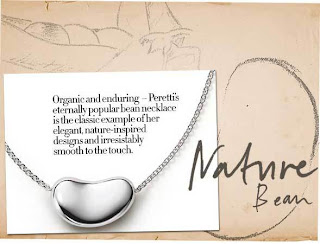 To sustain growth and increase revenues, Tiffany, as any other company, constantly works on creation of new products. Just last year, for Tiffany's 175 year celebration, the company released a new metal called Rubedo, which means "red" in Latin. According to Tiffany's website, it is among the most beautiful metals in the world. "This unique alloy is lightweight yet strong, polishes to a smooth luster and is exceptionally flattering to the skin," these are the words describing this new metal. Rubedo represents a mixture of gold, silver and copper, where the last component gives to the metal a nice pinkish color. The metal has been fashioned into jewelry pieces priced from $200 to $7,500 and the new collection has been announced to be made of a "new jeweler's metal." Since this new product line is Tiffany's innovation and has been introduced to the market just last year, it is still in the growth stage and does not have many competitors yet.
To sustain growth and increase revenues, Tiffany, as any other company, constantly works on creation of new products. Just last year, for Tiffany's 175 year celebration, the company released a new metal called Rubedo, which means "red" in Latin. According to Tiffany's website, it is among the most beautiful metals in the world. "This unique alloy is lightweight yet strong, polishes to a smooth luster and is exceptionally flattering to the skin," these are the words describing this new metal. Rubedo represents a mixture of gold, silver and copper, where the last component gives to the metal a nice pinkish color. The metal has been fashioned into jewelry pieces priced from $200 to $7,500 and the new collection has been announced to be made of a "new jeweler's metal." Since this new product line is Tiffany's innovation and has been introduced to the market just last year, it is still in the growth stage and does not have many competitors yet.
Being a responsible company, Tiffany is always aware of its customers' wants and needs. As Carson Glover, the director of worldwide media relations at Tiffany, reports "When Tiffany began planning our 175th anniversary, we felt the development and introduction of a new metal would be a fantastic way to mark this momentous milestone while at the same time responding to our customers' desire for more blush-colored metals."
 However, there are some disagreements on Tiffany's claim that Rubedo is a new metal since it is an alloy of already existing metals plus the combination is not new either. As reported by Forbes, Rubedo contains only 31% gold, which is mush less than a 14K gold piece would have. Though it is not an issue. Rubedo was very well received by customers. As Forbes states, it has a lot to do with Tiffany's name. Customers love Rubedo because they love Tiffany especially if it is stamped with Charles Lewis Tiffany's ageless signature.
However, there are some disagreements on Tiffany's claim that Rubedo is a new metal since it is an alloy of already existing metals plus the combination is not new either. As reported by Forbes, Rubedo contains only 31% gold, which is mush less than a 14K gold piece would have. Though it is not an issue. Rubedo was very well received by customers. As Forbes states, it has a lot to do with Tiffany's name. Customers love Rubedo because they love Tiffany especially if it is stamped with Charles Lewis Tiffany's ageless signature.








